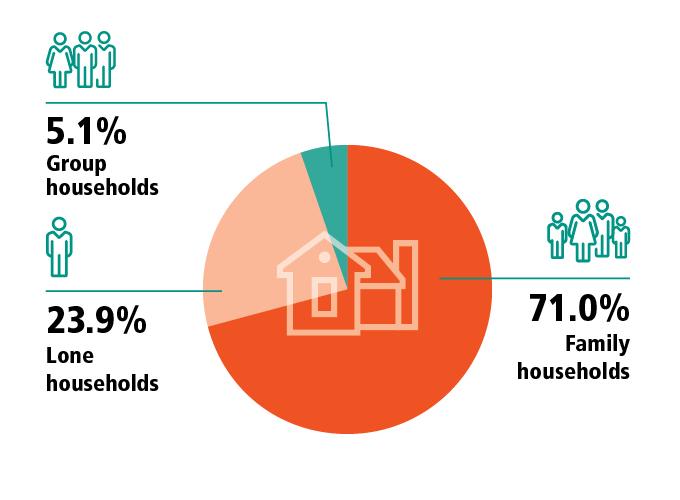Snapshot of Northern Territory (original) (raw)
In the 2021 Census, the number of people counted as usual residents of the Northern Territory (NT) was 233,000. This was up from 229,000 in 2016. Fifty years ago, in 1971, the Census counted 72,000 people. In 2021, three in five people in the NT lived in the capital city area of Greater Darwin (140,000).
The median age (AGEP) for people from the NT has been on the rise. In 1971, the median age was 23 years. The median age was 32 years in 2016 and 33 years in 2021. The Australian median age was 38 years in 2021.
Most people in the NT were born in Australia (BPLP)). The proportion of people who were born overseas has Increased over time. In 1971, 18.8% of people were born overseas. This increased to 19.8% in 2016, and 21.8% in 2021.
In 2021, the top five countries of birth in the NT were:
- Australia (69.5%)
- Philippines (2.7%)
- England (2.2%)
- India (2.2%)
- New Zealand (1.7%)
In 2021, most people in the NT only used English at home (57.3%) (LANP)). This was slightly down from 58.0% in 2016.
After English the most common languages used were Kriol (2.2%), Djambarrpuyngu (1.7%), Greek (1.4%) and Nepali (1.3%).
In 2021, the main religious affiliation (RELP)) in the NT was Christianity (40.5%). This proportion has decreased over time as people reporting non-Christian religions and no religious affiliation have increased. In 2016, Christian affiliation was 47.7%, and in 1971 it was 70.2%.
In 2021, 8.7% of people in the NT were affiliated with a non-Christian religion. The most common were Hinduism (2.7%), Buddhism (2.1%) and Islam (1.4%).
The percentage of people who identified as having no religious affiliation was 38.5% in 2021. This was an increase from 29.7% in 2016, and 17.9% in 1971.
In the NT, the median weekly income was 936forindividuals([INCP](/census/guide−census−data/census−dictionary/2021/variables−topic/income−and−work/total−personal−income−weekly−incp))and936 for individuals (INCP)) and 936forindividuals([INCP](/census/guide−census−data/census−dictionary/2021/variables−topic/income−and−work/total−personal−income−weekly−incp))and2,213 for families (FINF)) in 2021. These increased from 2016 when the incomes were 871forindividualsand871 for individuals and 871forindividualsand2,105 for families.
Households are getting smaller in the NT. In 2021, the average number of people who lived in each household in the NT was 2.8, a decrease from 4.2 people in 1971.
In 2021, 71.0% of households were family households. This was a decrease from 72.9% in 2016.
The most common type of family in the NT was families with children. In 2021, 44.7% of families were couples with children and 18.5% were one parent families.
Households
Image

Description
Based on place of enumeration. Excludes visitor only and other non-classifiable households.
Source: Household composition (HHCD))
The 2021 Census counted 85,000 occupied private dwellings across the NT. This was an increase from 79,000 in 2016. In 1971 there were 17,000 occupied private dwellings in the NT.
In 2021, most people lived in separate houses (66.8%), rather than flats, apartments or other dwellings. This was a slight increase from 66.2% in 2016. Over this time the proportion of people who lived in semi-detached housing increased from 12.1% to 12.7% and, people who lived in flats or apartments increased from 17.5% to 17.9%.
In 2021 46.1% of households in the NT were homeowners (owned outright or with a mortgage). This was a slight increase from 44.9% in 2016.
Housing
Image

Description
Refers to occupied private dwellings and excludes visitor only and other non-classifiable households. Owned with a mortgage includes dwellings being purchased under a shared equity scheme. Rented excludes dwellings being occupied rent-free. Other tenure type and tenure type not stated represent remaining 6.4%.
Source: Tenure type (TEND))
For more detailed state specific data see the Snapshot of Northern Territory data cube, available for download on the Snapshot of Australia page.